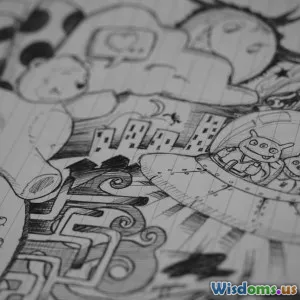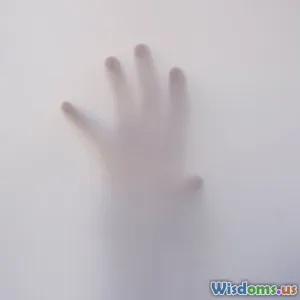
Aliens Among Us A Look at UFO Sightings Before and After 2000
10 min read Explore UFO sightings before and after 2000, revealing shifts in patterns, technology, and global responses to alien encounters. (0 Reviews)
Aliens Among Us: A Look at UFO Sightings Before and After 2000
From mysterious lights dancing in the skies to official government disclosures, UFO sightings have captivated humanity’s imagination for decades. But how have these sightings evolved over the years? Specifically, what distinguishes UFO encounters before 2000 from those after? This article takes an in-depth look at the patterns, evidence, technological influences, and government involvement in UFO sightings, unearthing intriguing insights about the possibility of aliens living among us.
The Fascination with UFOs: Setting the Stage
The term "UFO" (Unidentified Flying Object) was coined in the mid-20th century, igniting a cultural and scientific fascination with the possibility of extraterrestrial visitors. From the infamous Roswell incident in 1947 to countless sighting reports worldwide, UFO phenomena blur the lines between unexplained science, conspiracy, and popular culture.
Why compare the period before and after 2000? The turn of the millennium marked significant changes: the explosion of digital technology, the rise of social media, and unprecedented government transparency concerning UFO-related documents — all of which shaped how UFOs are reported, perceived, and studied.
UFO Sightings Before 2000: From Legend to Legitimate Inquiry
Key Characteristics and Examples
Prior to 2000, UFO sightings were often anecdotal, reliant on eyewitness accounts and sporadic photographs or videos. The cultural context of the Cold War added elements of suspicion and intrigue, with governments closely monitoring any aerial anomalies.
- Roswell Incident (1947): Perhaps the most famous UFO event, where a crashed object was initially reported to be a "flying disc". Though officially explained as a weather balloon, the incident fueled decades of speculation about extraterrestrial life.
- The Phoenix Lights (1997): A mass sighting of mysterious lights spread across Arizona’s skies, witnessed by thousands. The US Air Force later claimed these to be flares during military exercises, yet many witnesses disputed this explanation.
Challenges in Documentation and Public Perception
Before the internet's ubiquity, UFO reports circulated mainly in print, niche publications, or word of mouth, limiting widespread public discourse. Skepticism was rampant, partly because many sightings could be attributed to atmospheric phenomena, experimental aircraft, or hoaxes.
Government initiatives like Project Blue Book (conducted from 1952 to 1969) collected and analyzed thousands of UFO reports, concluding most were explainable, though a small percentage remained mysterious.
After 2000: The Digital Era and Shifting Paradigms
The Explosion of Data and Citizen Journalism
Post-2000, the rise of smartphones, the internet, and social platforms changed the UFO phenomenon dramatically:
- Mass Reporting: Easy access to cameras and global sharing platforms led to an unprecedented surge in sightings captured on video.
- Community Building: Forums and social media connect enthusiasts and experts, fostering diverse perspectives and faster analysis.
For example, the 2004 USS Nimitz incident, where naval pilots encountered unknown aerial technology off the coast of California, was declassified and broadly disseminated years later. Videos showcasing unusually maneuverable objects challenged previous assumptions about UFO technology.
Government Transparency and Official Acknowledgment
Perhaps the most groundbreaking development post-2000 has been official acknowledgment of unidentified aerial phenomena (UAP). In 2020, the Pentagon formally released videos showing encounters with UAPs, confirming these events were real and taken seriously at the highest levels.
The establishment of the UAP Task Force illustrates an evolution from dismissive responses toward intentional investigation, underscoring national security interests intertwined with scientific curiosity.
Comparing UFO Sightings: Before vs. After 2000
| Aspect | Before 2000 | After 2000 |
|---|---|---|
| Documentation Mediums | Print, analog photos, anecdotal reports | Digital videos, social media, smartphones |
| Government Transparency | Limited, often classified with some debunking | Increasingly open, official releases and task forces |
| Public Perception | Skeptical, fringe subject | More mainstream curiosity, scientific interest |
| Technology Observed | Lights, discs, basic descriptions | Advanced flight maneuvers, hypersonic speeds |
| Investigation Initiatives | Projects like Blue Book, largely closed by 1969 | Continuous, global, combining military and civilian data |
Why Does It Matter? Implications of Modern UFO Studies
The progression of UFO research affects multiple domains:
-
Scientific Inquiry: Access to better data pushes scientists to rethink physics limitations and aerospace possibilities. Hypotheses about propulsion systems or energy sources now consider UAP encounters seriously.
-
National Security: Unknown objects entering controlled airspace create concerns that transcend curiosity, prompting strategic responses.
-
Sociological Impact: Increased revelation and communal sharing challenge previous stigmas, empowering open discussion about extraterrestrial life and human identity.
Dr. Eric Davis, a theoretical physicist involved in UFO research, stated, "Regardless of origin, understanding these phenomena is crucial for advancing aerospace technology and our worldview."
Conclusion: Are Aliens Among Us?
While definitive proof that aliens walk among us remains elusive, the accumulation of data, especially after 2000, has transformed the UFO narrative from fringe myth to a subject worthy of scientific, governmental, and public attention. Modern technology, coupled with a shift in attitudes and transparency, unveils a complex picture that challenges previous dismissals.
Future decades promise deeper investigation, possibly revealing answers to one of humanity’s most profound questions: Are we alone in the universe? In the meantime, the watchful eyes of millions—armed with smartphones and open minds—keep looking to the skies, perhaps prepared for the day these aliens among us may no longer be just a mystery.
References & Further Reading
- United States Department of Defense, "Unidentified Aerial Phenomena Task Force," 2020
- Project Blue Book Archives, U.S. Air Force
- Leslie Kean, UFOs: Generals, Pilots, and Government Officials Go on the Record, 2010
- The Nimitz Encounters, To The Stars Academy of Arts & Science, 2017
Rate the Post
User Reviews
Popular Posts



















